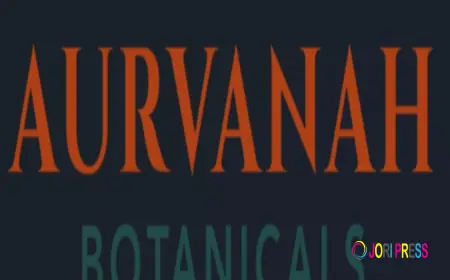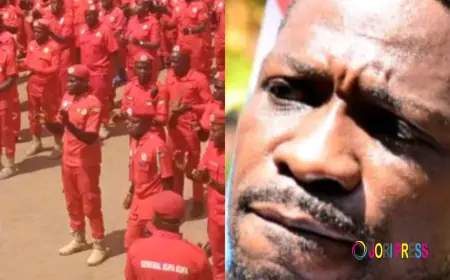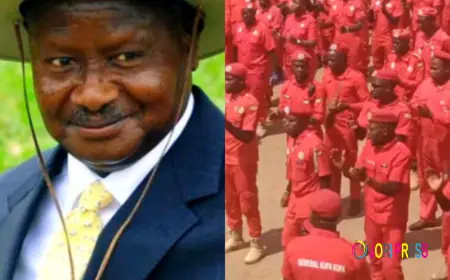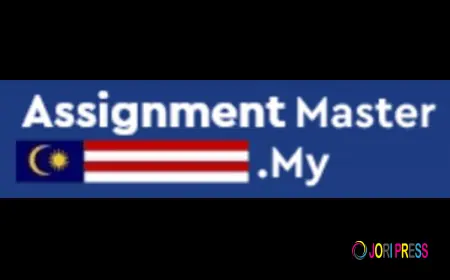Uganda’s minerals boon moment?


Could adoption of continental mining vision propel country’s development agenda?
Kampala, Uganda | RONALD MUSOKE | It is an open secret that Uganda sits on a geological treasure map. From gold-rich belts in the country’s northeastern province of Karamoja to deposits of critical transition minerals now prized by global clean-energy industries, the country’s subsoil could, in theory, finance the ambitious development programmes the government has set for itself.
But as was made plain at a recent consultative workshop held on Sept. 4 in Kampala by the African Minerals Development Agency (AMDC), an African Union agency, having minerals is not the same as turning them into broad-based, sustainable prosperity.
Led by Dr Susan Nakanwagi (PhD), an energy and natural-resources governance specialist, a multi-stakeholder assessment mapped Uganda’s mining governance. Their verdict put it bluntly: Uganda has many of the right pieces but the challenge now is making them work together so mining pays for the country’s development rather than draining communities.
The experts benchmarked Uganda against the African Mining Vision (AMV) and the African Minerals Governance Framework’s six pillars which include; legal and regulatory frameworks; geological data systems; fiscal regimes and revenue management; linkages and investment promotion; artisanal and small-scale mining governance; and environmental and social safeguards.
They said Uganda appears to have solid legal scaffolding and better geological data, but has persistent weaknesses in revenue collection and distribution, artisanal and small-scale mining (ASM), environmental regulations enforcement, and institutional coordination.
Artisanal gold mining
The precarious status of artisanal and small-scale mining (ASM) was the workshop’s starkest concern. Scoring 47%, the sector is an economic lifeline for thousands of Ugandans, but it is also a source of environmental harm, child-labour risk, and lost revenue. “We realised that even though they are the biggest percentage of the mining industry today in Uganda, they face the hardest challenges,” Dr Nakanwagi said. She said licensing procedures are complex and costly; and mercury use in gold processing remains widespread due to lack of affordable alternatives.
Kenneth Asiimwe, the CEO of the Uganda Association of Artisanal and Small-Scale Miners, said although the government has for decades treated ASMs like criminals, that is changing; three artisanal gold licences have been granted, ten more are in process, and the 2025 ASM regulations signal formal recognition.
Asiimwe said because financial institutions misunderstand mining cashflows and refuse to lend, there is need for a Mining Bank, initially a microfinance facility, that understands mineral cashflows, can underwrite processing cycles, and offer performance-tied lending. Access to finance, Asiimwe said, could accelerate legalisation, improve environmental practices, and expand tax compliance.
The minerals revenue challenge
If the government’s priority is crystal-clear — use minerals revenues to fund national ambitions — the assessment raises a cautionary note: Uganda’s systems are not yet optimised to capture or distribute those revenues equitably.
The fiscal regime scored 61%. The assessment notes that although there are modern tax provisions and regular amendments, critical gaps remain including; weak beneficial-ownership disclosure, poor revenue distribution mechanisms, no sovereign wealth or stabilisation fund earmarked for mining, and limited auditing capacity at sub-national levels. Dr Nakanwagi singled out distribution and the absence of a sovereign wealth model as “doing badly.”
Racheal Bakazi Mbabazi, the Manager, Natural Resource Management Unit in the Petroleum and Mining Division-Domestic Taxes at Uganda Revenue Authority (URA) said the national tax agency is working to align tax laws with the 2022 Mining and Minerals Act and to digitise tax administration for the sector.
The URA’s push to create traceability and chain-of-custody systems, as well as digitise records (especially for Bank of Uganda’s domestic gold purchase), is designed to plug leakage and ensure minerals become taxable assets in practice, not just in law. Large-scale miners are already on URA’s radar but small-scale and artisanal operators — who collectively employ hundreds of thousands — often slip through fiscal nets.
“We want to digitilize the sector so that even if I don’t find the artisanal miner on the ground, I can track the person who he or she sold the mineral to and (he or she) is using the system,” said Mbabazi.
Experts in the mining sector say fiscal reform is about more than taxes. It is political economy; ensuring royalties and windfalls are captured, audited, and reinvested in ways that support long-term national goals. The workshop recommended measures like a windfall tax on super-profits, robust beneficial-ownership enforcement, and dedicated revenue reconciliation systems that span central and local government.
Uganda’s vision and a continent’s compass
The African Mining Vision (AMV), the African Union’s 2009 blueprint, urges member states to move beyond raw mineral exports toward value addition, build local linkages, transparent governance, and integration of mining into broader industrial strategies
For Uganda, aligning with the continental vision is not academic. It could decide whether mineral wealth becomes the backbone of the government’s Vision 2040- the country’s long-term development plan- or just another cycle of missed opportunities.
As Dr Nakanwagi put it during her presentation of the findings: “The AMV is about ensuring Africa’s vast mineral wealth drives broad-based, inclusive and sustainable socio-economic development.”
She said Uganda’s assessment used the AMV’s six governance pillars as the measurement frame. And the numbers told a nuanced story. Uganda scored 67% for legal and institutional frameworks, 70% for geological and mineral information — its strongest area — 61% for fiscal and revenue management, 50% for linkages and diversification, 47% for artisanal and small-scale mining (ASM) governance (the weakest), and 59% for environmental and social safeguards. Those averages are not just percentages; they are a mirror of where policy, institutions, and practice are helping or hindering the country’s development goals.
Where Uganda does well and why it matters
Two areas stood out as relatively strong: the legal-institutional architecture and the country’s geological mapping. On paper, Uganda now has a comprehensive set of laws and regulations touching the mining sector: constitutional provisions, a national mineral policy, the 2022 Mining and Minerals Act, licensing regulations, export/import rules, and as of 2025, fresh regulations specifically for artisanal and small-scale mining.
Uganda has also moved quickly to domesticate some regional instruments and global conventions including the International Conference on the Great Lakes Region’s (ICGLR) Regional Certification Mechanism and the Minamata Convention, as additional layers of compliance. That legal density is not trivial, said Dr. Nakanwagi. The assessment scorers, however, labelled the robust legal and institutional framework “very satisfactory” — a necessary but not sufficient condition for impact.
Geodata is the other success story. The country has invested in airborne geophysical surveys and stream-sediment sampling. The assessment reports that about 80% of the country has now been mapped. Morris Tabaaro, the Inspector of Mines at the Ministry of Energy and Mineral Development, described the result as “an X-ray” of Uganda, a baseline that can attract investors, guide the national mining company, and inform strategic planning. Yet Tabaaro also warned that most data remain “raw”; interpretation is costly, secure storage is limited, and public access is inconsistent. Put differently, what Tabaaro meant is that although the minerals data exists, more work is required to turn it into actionable, democratised information.
Environment, community rights and the social contract
Mining is also inherently disruptive and often the environment pays immediate costs while communities bear long-term consequences if safeguards fail. Although Uganda has legal provisions for environmental impact assessments, closure or decomissioning plans, and waste management enforcement is inconsistent. Compensation mechanisms are patchy, and the principle of free, prior and informed consent is not yet fully operationalised.
Hajarah Nakiberu, the Senior Environmental Officer in charge of Mining at the National Environment Management Authority (NEMA) stressed that formalisation must be accompanied by training for miners on environmental management, on-site monitoring, and stricter occupational-health standards. “Miners don’t always understand the impacts of their activities,” she said.
Andrew Byaruhanga the Executive Diretor of Resource Rights Africa, a local non-profit operating in the Karamoja region of northeastern Uganda said Karamoja’s limestone and marble operations illustrate a grim outcome: landowners become destitute on their own land when employment, contracts and corporate social responsibility fail to materialise. He said, for resource wealth to translate into development, affected communities must be genuine partners. He said there must be transparent benefit-sharing, resettlement plans when needed, and robust grievance settling mechanisms.
Institutions, coordination and the regional dimension
The experts listed cross-cutting issues that require attention including gender and marginalised groups dynamics; fragmentation and silos among concerned ministries, agencies, and departments; and regional harmonisation. Women and marginalised groups face barriers to benefiting from the value created in the mineral sector; including in acquiring mining licenses, get finance, training, and compensation.
To curb fragmentation among concerned ministries, NEMA, URA, local governments and enforcement agencies, the experts recommended better coordination. It was noted that the Africa Minerals Development Centre (AMDC) can support harmonised standards, pooled expertise and regional value chains.
Mkhululi Ncube, a Programme Officer at the AMDC urged Uganda to ratify the AMDC statutes so the centre can operate at full capacity and help countries translate continental visions into national practice. A functional regional architecture, combined with business councils and sectoral partnerships, could help Uganda build integrated processing hubs rather than remain a source of raw exports, he said. The current ratified member states are Guinea, Mali, Nigeria and Zambia. Ncube said the first 15 member states to ratify the AMDC will be its founding members.
National mining company critical
Hope Kyarisiima, the Country Coordinator, AC-EU Development Minerals Programme at the UNDP office in Uganda argued for innovation across the sector. She said digital licences, traceability systems for minerals, AI-driven data analysis, and digital tax administration could reduce leakage, boost transparency and attract better-quality investment.
She said: “The policy implication is straightforward: invest in digital infrastructure, train government and community users, and open geodata while protecting sensitive information.” Uganda’s national mining company — newly operationalised — could play a role in consolidating data-driven strategies for local beneficiation.
Theophilus Adoko, the Policy Development Officer at the AMDC prescribed a recipe to ensure that the continent’s mining sector doesn’t become so much of an enclave sector. “There is need to draw linkages to other sectors of the economy to make sure that the continent grows economically, value is retained on the continent and all the goodies that come with optimising our mineral resources.”
“One of the key requirements to drive realisation of the African mining vision is the assessments that we are rolling out,” Adoko said. He said governance is a key component because governance reforms is a key requirement to have attractive investment into the sector. “A lot of investors are very particular about it,” he said, “For instance, certainty of your regulations, that you don’t just get up and change regulations; they want to be assured that their investments are safe.”
“That is the reason why we are rolling out these governance assessments, to first identify what the issues are, the big mining issues are, and how we can work together to address these issues and then position the mining sector such that we are able to depend on it to industrialise.”






















































